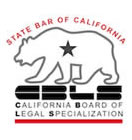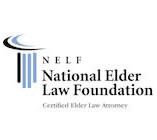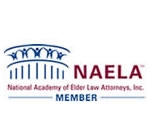Trust Administration
Trust administration is the process by which a trust is processed following the death of the settlor, or creator of the trust, to comply with the terms of the trust. Administration must occur when there is a death of a settlor of a trust, even if a trust has two settlors. A surviving spouse settlor also will need to complete the administration of the joint trust with their spouse.
Why Is Any Administration Required With a Trust?
A common misconception is that by having a living trust, no administration is required. It is true that, absent problems described below, the administration of a trust will typically avoid a court probate proceeding. However, that does not mean that an administration is not required. In fact, a typical trust must be processed in much the same way a probate estate is processed through the court, although it will typically avoid court involvement.
Is Court Action Required?
Trusts are generally drafted and designed to avoid the necessity of having a court administer the trust after the settlor’s death. Occasionally, however, there are instances where a trust is ambiguous, needs some type of clarification or modification, or where the trustee desires court approval of actions taken in the administration. In those situations, a trust administration matter can find its way to court. The advisability of seeking court approval is best determined after reviewing the particular circumstances of the trust involved with a professional well versed in trust administration matters.
What Steps Are Required in a Trust Administration?
The role of the trustee of the trust is to marshal and inventory all assets of the trust. This process necessarily involves determining whether there were assets outside the trust which were supposed to be inside the trust. Once the inventory is complete, valuations for all assets must be obtained. Valuations are used to determine whether a Federal estate tax return will need to be filed. Tax issues are varied and complex, and are best addressed after reviewing the specific situation by a knowledgeable attorney.
All final debts and expenses of the settlor (decedent) will need to be paid. For this purpose, the trustee must coordinate with the settlor’s probate estate (if there is one) for payment of these expenses. Formal notice may also be given to creditors if circumstances warrant. The trustee should consult with an attorney to determine if notice is recommended.
The trustee must communicate with the beneficiaries of the trust and with the settlor’s heirs at law regarding the trust. California law requires that the beneficiaries and heirs receive notice regarding the existence of the trust, and all beneficiaries are entitled to be kept apprized of the administration process. In addition, the trustee must provide annual accountings to the beneficiaries of the financial activity of the trust, unless the trust provides otherwise.
The trustee is also required to distribute the assets of the trust according to the terms of the trust. This may involve transferring the assets outright to the named beneficiaries, or may involve holding the assets for some time, even for a beneficiary’s entire lifetime, for that beneficiary’s use or for a beneficiary’s special needs. The distribution provisions of a trust are as varied as the settlors who create them. Should the distribution provisions be ambiguous or unclear to the trustee who is administering the trust, it is always advisable for that trustee to consult with a knowledgeable trust administration attorney to guide him/her through the particular terms of the trust in question.
What If the Trust Was Not Funded?
A trust should be funded by the settlor of the trust when the trust is created through the transfer of title of the settlor’s assets to the trust. In cases where the settlor neglected to transfer title of his/her assets or where title to an asset was inadvertently not transferred to the trust, the trustee, following the settlor’s death, will need to arrange for transfer of the assets to the trust if possible. There are different methods, depending on the circumstances, to obtain the transfer of those assets to the trust, including declarations and court orders.
How Long Does Trust Administration Take?
It varies. For a single settlor trust with only one beneficiary, the administration process can be completed in a few months. For a more complex trust, or for trusts with litigious beneficiaries, the administration process can take as long as, or longer than, the probate proceeding process. However, the trust administration process can be expedited by a knowledgeable attorney, who can guide the trustee on the steps to take to conclude the administration as quickly as possible.
View a Video: Selling a Residence in a Trust Administration
Estate Administration
Estate administration is the generic term for the administration of a decedent’s estate. Estate administration can encompass one or more simplified procedures, a probate proceeding, and/or a trust administration. In essence, an estate administration (by any method) requires:
- determining and valuing the decedent’s assets
- determining who is entitled to the decedent’s assets
- determining and paying the decedent’s lawful debts and taxes
- transferring the decedent’s assets to the proper beneficiary(ies)
Of course, estate administration is considerably more complex in high net worth cases and/or where assets must be liquidated to pay debts and taxes, where there are contested claims against the estate, where the decedent owned land in another state, where the decedent left a dependent minor child or spouse, or where any combination of these and/or other issues exists. Both the estate administrator (i.e., the executor or trustee) and beneficiaries of an estate often need an advisor to help them navigate this complex area to ensure that the administration is done properly and to understand and protect their rights. Some of the simplified procedure situations include the following:
Surviving Spouse/Minor Children:
A surviving spouse, and in some cases the decedent’s minor children, have a number of administration options which are not available to other beneficiaries of a decedent’s estate. These options include a Spousal Property Petition, Surviving Spouse Affidavit, declarations to confirm community property title to real property, Probate Homesteads, and Family Allowance Petitions.
Small Estates:
Where a decedent dies with less than $150,000.00 held in his/her sole name (i.e. not in joint tenancy and not in trust), a declaration procedure is available in California to transfer the assets to the heirs or beneficiaries. Specific requirements must be met in order to use the declaration procedure. Generally, an attorney is needed to prepare this declaration properly.
Named Beneficiaries:
Insurance policies, annuities, retirement accounts, and some investment accounts usually have one or more persons designated as the beneficiary(ies) of the funds upon the decedent’s death. There may also be death beneficiaries on credit card accounts (credit card balance insurance), fraternal organization or club death benefits, union death benefits, and military death benefits.
To collect the funds, a certified copy of the decedent’s death certificate will need to be provided to the insurance company, bank, etc., and the named beneficiaries will have to sign some forms. Unfortunately, this can sometimes be difficult. A company will occasionally refuse to give out information regarding who the beneficiaries are or the amount of the proceeds or will demand “court approval of a distribution” prior to the release of funds. Often an experienced attorney can provide necessary information to the companies, thereby allowing the release of information and the funds without requiring a court order.
Joint Tenancy:
Assets held in joint tenancy with “rights of survivorship” (sometimes just labeled “joint tenants”) pass automatically at death to the surviving joint tenant. Frequently property such as real estate, bank accounts, stocks, bonds, and automobiles is held in joint tenancy, but there must be a written document (such as a deed to real property or a title to a car) showing that joint tenancy exists. However, this does not mean that title to the asset is automatically cleared.




